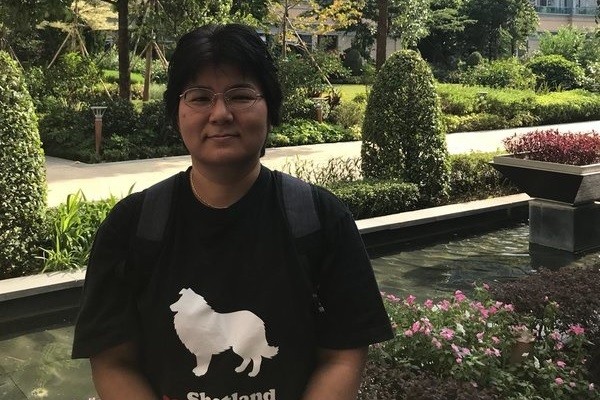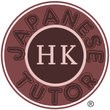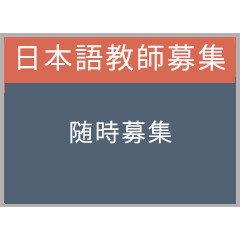Private Japanese Lesson in Yuen Long | Tuen Mun
Senior Japanese Tutor JUNKO I

Native Snior Japanese Teacher JUNKO I
Japanese Teaching Experience 13 YEARS
Native Language Japanese
Language Ability Fluent in Cantonese, Basic in English and Mandarin
Born OSAKA – Japan
Teaching Area Yuen Long, Tuen Mun, Tin Shui Wai
Japanese Courses Provided by JUNKO I
Hong Kong Native Senior Japanese Tutor
Hello, everyone! I am JUNKO I. from Hong Kong Japanese Tutor. I have lived in Hong Kong for 25 years. I am from OSAKA.
I love movies and photography when I was a school student. Now I still like taking photos using the mobile phone. I studied Cantonese at school when I first came to Hong Kong, then I was working for a Japanese company in Hong Kong and Hong Kong toy company for several years. Then I became a freelancer from 2009 as a translator between Cantonese and Japanese, and a Japanese tutor in Hong Kong.
Japanese language is different between the other language, which makes many Hong Kong students feel complicated. That is why my Japanese lesson is not only teaching the students how to speak Japanese but also I teach Culture of Japan. I believe the interests helps the students high motivation.
你好!我是Hong Kong Japanese TutorのJUNKO.I.住在香港25年的大阪人。學生的時候開始很喜歡看電影與攝影,現在也經常用電話拍照的。在香港學了1年廣東話,然後做日本公司,香港玩具公司…之後2009年開始做廣日翻譯同用廣東話教日文。
我覺得日本語是其實1種比較用法複雜的語言,所以除了正式文法之外,想告訴學生日本人文化,日本人特性等等的。亦為了學好語言最重要的是有興趣,所以不但用書,很歡迎使用其他教材上堂的。
はじめまして。私はHong Kong Japanese TutorのJUNKO Iです。香港在住25年目の大阪人です。
学生の頃から映画や写真が好きで今もスマホですがよく写真を撮っています。香港では広東語を1年勉強しました。その後日系の会社や香港のおもちゃ会社を経て2009年からフリーランスで日本語と広東語の通訳や翻訳、日本語の先生をしています。
日本語は他の言語と違って話す相手によって使い分けなければならないちょっと複雑(笑)な言葉だと思っています。
ですから生徒さんには日本語の文法だけでなく日本人の文化や人間性を理解して貰えるように本以外の事も授業に織り交ぜてお話をしています。
また語学を勉強する為には興味のある所から入る事も大切だと思っています。ですから興味がある事があれば授業にどんどん取り入れたいと思っています。
Japanese Teaching Approach
I will follow the student’s requirements and make the lesson plan with the student.
生徒さんの希望に応じて相談して決めています。
Ask JUNKO I Teacher Japanese Learning Questions
JUNKO I先生へ「ような」と「みたいな」と「ぽい」の違いについて教えていただけないでしょうか?
JUNKO I先生’s Answer:
「ような」→似ているけれども違うもの。
「みたいな」→似ているけれど違うもの、ようなの口語。
「ぽい」→近いけど本当かどうかわからないこと。
JUNKO I先生へ 「~と言っていました」と「~と言いました」の違いについて説明してくれませんか?
JUNKO I先生’s Answer:
「~と言っていました」→ は過去進行形でその記録が維持されているという事。
「~と言いました」→ 過去形で言ったという事実という事。
JUNKO I先生へ 「分かりました」と「了解しました」の違いについて説明してくれませんか?
JUNKO I先生’s Answer:
「分かりました」→ は丁寧語でどんな相手にもつかえます。
「了解しました」→ も丁寧語ですが自分と同等の人や立場が低い人に対して使います。
Ask JUNKO I Teacher Japanese Culture Questions
食事について:
ほとんどの日本人は小さい頃からご飯はひと粒も残さないように食べなさいと言われて育ちました。ですからどんぶりものを食べる時も基本的にスプーンなしでも残さず食べられるようにはしが使えます。「いただきます」や「ごちそうさまでした」意味にも含まれるようにお米を作ってくれる人や食べ物が食べられることに対する感謝の気持ちがこめられているからです。
About meals:
Most Japanese people grew up being told by the parents that they should eat every grain of rice at a young age. Therefore, when eating Donburi (a Japanese “rice bowl dish” consisting of fish, meat, vegetables or other ingredients simmered together and served over rice), you can basically use the chopsticks so that you can eat without a spoon. Before the meal Japanese people say “itadakima” and after the meal say “gochisousama” which is an appreciation toward all those who have made it possible for you to have food on the table.



Stay in Touch
RSS
Facebook
Twitter
Google +1